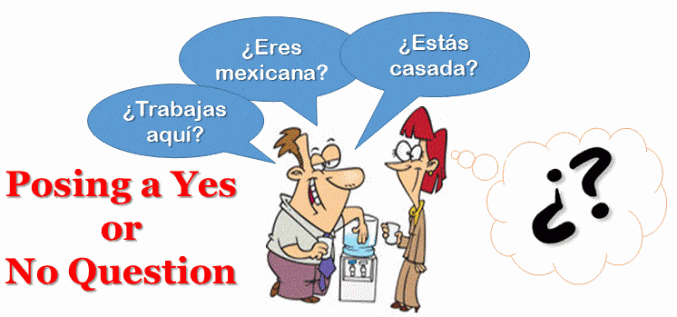Posing questions in Spanish that requires a “yes” or “no” answer is very easy. Let’s see how to do it.
1. Unlike in English, when you want to write a question in Spanish, you put an upside-down question mark — ¿ — at the beginning of the sentence and a standard question mark — ? — at the end:
¿Tiene Ud. sed? (Are you thirsty?)

2. Also, the words do and does and sometimes am, is, and are don’t translate from English into Spanish. In Spanish, these words are part of the meaning of the conjugated verb:
¿Vienen hoy? (Are they coming today?)
3. To form a negative question, you simply put no before the conjugated Spanish verb:
¿No quieres tomar algo? (Don’t you want to drink something?)
4. Intonation is by far the easiest way to ask a question in Spanish. If you’re speaking, all you need to do is raise your voice at the end of what was a statement and add an imaginary question mark at the end of your thought. When writing, you just write down your thought and put question marks before and after it. It’s that simple. Here’s an example:
¿Ud. quiere tomar algo? (Do you want to drink something?)
5. ¿No es verdad? and ¿Está bien? are tags that can have a variety of meanings: isn’t that so?, right, Isn’t (doesn’t) he/she?, aren’t (don’t) they?, aren’t (don’t) we?, aren’t (don’t) you?
You generally place ¿No es verdad? or ¿Está bien? at the end of a statement — especially when “yes” is the expected answer:
Ud. quiere tomar algo. ¿No es verdad? (You want to drink something, don’t you?)
Tenemos jugo. ¿Está bien? (We have juice. Is that all right?)
6. Of course, we can also use a QUESTIONS WORDS to make a question, these are called Open-ended questions.
¿Dónde vives? (where do you live?)